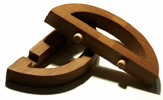

[ Fall 96-03: Tangible Interfaces | Spring 96-97: Collaboration ]
Tangible Interfaces
|
Fall 2002-1998 (MAS 834)
Fall 1997 (MAS 961)
Fall 1996 (MAS 964)
|
Media Arts and Sciences, Graduate Seminar, Fall 1996 ~ 2002
| Prereq.: Permission of instructors |
| G (Fall) |
| 3-3-6 H-LEVEL Grad Credit |
| When: |
|
| Where: |
E15 |
| Instructor: |
Prof. Hiroshi Ishii
Tel. 253-7514
ishii@media.mit.edu |
|
|
|
Course description
This course will explore the design issues of "Tangible Interface," a new form of Human-Computer Interactions (HCI) which focuses on the physicality of media. Tangible Interfaces will make bits accessible through everyday physical surfaces (e.g. walls, desktops, ceilings, doors, windows), everyday objects (e.g. cards, books, models, instruments) and ambient media such as light, sound, airflow and water flow in a physical environment.
This is an experimental projects course with enrollment limited to 10~12 MAS students.
We will explore ways of broadening the bandwidth of interaction between people and digital information by :
- allowing users to "grab & manipulate" bits by coupling bits with everyday physical objects, and
- enabling users to be aware of background bits at the periphery using ambient display media such as light, sound, airflow, and water movement in an augmented space.
The goal of this course is to create new instances of Tangible Interfaces which bridge the gap between people, bits and atoms, and go beyond the current dominant model of Graphical User Interface (GUI) bound to a flat rectangular screen, windows, mouse, and keyboard. These new interfaces should take advantage of natural physical affordances to achieve a legibility and seamlessness of interaction not achievable with traditional GUI.
The instructor will provide the conceptual framework of Tangible Interface with several design examples. The background information about related emerging new paradigms of interface such as Ubiquitous Computing and Augmented Reality will also be provided.
Students will explore the coupling of bits and atoms based on themes such as
- scientific instruments / drawing instruments, (e.g. lens, pen)
- information appliances / furniture, (e.g. lamp, refrigerator, table)
- bits at periphery (e.g. ambient display of activities in a cyberspace)
Students will design experimental interfaces and applications using concept sketches, physical mockups, and working prototypes. Final project reports must be submitted in CHI paper format. Submission of the papers to CHI Late Breaking Results Session is encouraged. |
Collaboration between
People, Computers and Things
|
Spring 1997 (MAS 837)
Spring 1996 (MAS 962)
|
Media Arts and Sciences, Graduate Seminar, Spring 1996 and 1997
| Prereq.: Permission of instructors |
| G (Spring) |
| 3-0-6 H-LEVEL Grad Credit |
| When: |
Wednesday, 11:00AM-1:00PM |
| Where: |
E15-054 |
| Instructors: |
Prof. Hiroshi Ishii
Room: E15-485
Tel. 253-7514
ishii@media.mit.edu |
Dr. Henry Lieberman
Room: E15-305A
Tel. 253-0315
lieber@media.mit.edu |
|
Course description
We live in a complex world composed both of atoms and bits. In this world, we interact with people, computers and other objects in the environment. The computing capabilities we design into objects in our physical environments as well as in our virtual arenas are rapidly increasing, but do not necessarily translate into productive interactions with us. We must take special steps to ensure that the interactions between people, computers, and the physical environment are useful, helpful, and enjoyable.
This seminar will explore aspects of media design that facilitate interactions between
1) human collaborators,
2) humans and computers, and
3) humans and physical/virtual environments.
Students will investigate the design space of media for seamless interaction using concept sketches, mockups, and simple prototyping. Regular readings, papers, and small projects will also be required.
The focus of this course is to consider:
- how we can augment physical environments using computer and communication technologies;
- how we can support seamless interactions between people, computers and things, and
- how we can build intelligent assistants for everyday use.
We will focus on innovative concepts, theoretical frameworks, software and system architecture.
We will explore current work in non-traditional interfaces, such as
- Shared drawing for collaborative design and visual thinking.
- Media spaces that interconnect spaces and support "awareness."
- Problems surrounding computer-mediated human interaction and communication in conference and groupware.
- Intelligent agent interfaces that can learn.
- Ubiquitous Computing and Augmented Reality.
- Tangible User Interfaces that physically instantiate GUI widgets.
We will introduce innovative concepts, concrete examples of system design, video and live demonstrations of systems, and lessons learned through the use of systems to address the various issues of media design. The goal of this course is to explore a new paradigm of media design that augments the human interactions through class discussions and small projects. |
Home Page
